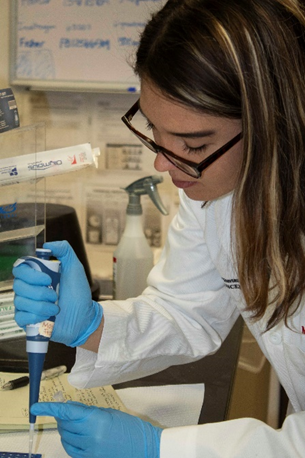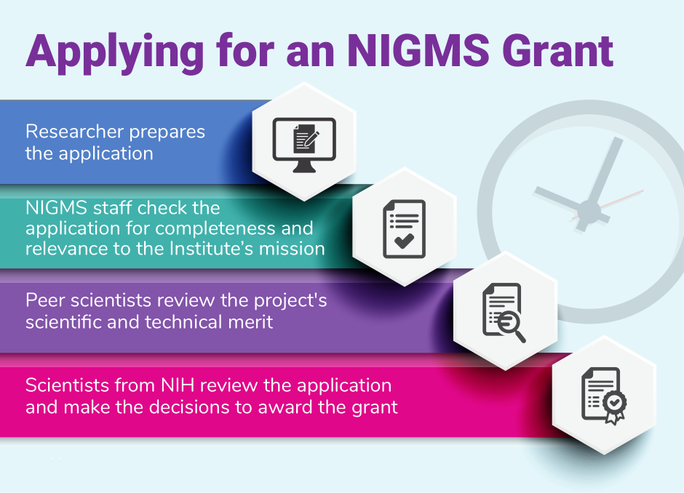Note to our Biomedical Beat readers: Echoing the sentiments NIH Director Francis Collins made on his blog, NIGMS is making every effort during the COVID-19 pandemic to keep supporting the best and most powerful science. In that spirit, we’ll continue to bring you stories across a wide range of NIGMS topics. We hope these posts offer a respite from the coronavirus news when needed.
 Scientific research requires many resources, which all require funding.
Scientific research requires many resources, which all require funding.Credit: Michele Vaughan.
Scientific inspiration often strikes unexpectedly. The Greek mathematician and inventor Archimedes first thought of the principles of volume while taking a bath. Otto Loewi designed an important experiment on nerve cells based on a dream involving frog hearts.
But going from an initial moment of inspiration to a final answer can be a long and complex process. Scientific research requires many resources, including laboratory equipment, research organisms, and scientists’ time. And all of this requires funding. Government grants support the majority of research in the United States, and the main source of these grants for biomedical researchers is the National Institutes of Health (NIH). NIH is the primary federal agency for conducting and supporting basic, clinical, and translational medical research. It investigates the causes, treatments, and cures for both common and rare diseases.
NIGMS, one of NIH’s 27 institutes and centers, funds researchers who investigate how living systems work at a range of levels, from molecules and cells to tissues and organs, in both research organisms and humans. Understanding how living systems work is crucial for determining how they malfunction in disease, and understanding the causes of disease is essential for developing treatments. That’s why the type of research that NIGMS funds is the starting point of all modern disease prevention and treatment. NIGMS currently supports more than 3,000 researchers through more than 5,000 grants.
NIGMS offers a variety of grants that serve different purposes. The most common type of grant funds a single research project over several years. But others fund small businesses, research resources, and educational products. NIGMS also provides grants that encourage diversity and support student research. Applying for a grant is a highly competitive process, and the following steps provide an overview.

- Increased the survival rate from burn injuries by improving methods of wound care, nutrition, and infection control
- Explained how genes affect the way a person responds to certain medications, including those to treat cancer and prevent blood clots
- Shed light on the critical functions of carbohydrates, sugar molecules found on all living cells that are vital to fertilization, inflammation, blood clotting, and viral infection
- Modeled infectious disease outbreaks and the impact of interventions through computer simulations to provide valuable information to public health policymakers
NIGMS continues to support thousands of researchers so that even greater discoveries can be made in the future. And since the Institute is part of the federal government, we all help support important scientific discoveries as well when we pay taxes.
In an upcoming series of posts, we’ll be exploring different types of grants and some of the research they’re funding.


I would like to join your team,
Thanks for your interest. For more information on the funding opportunities we provide, please visit our Grants and Funding webpage.